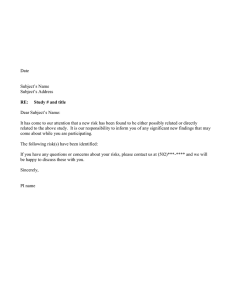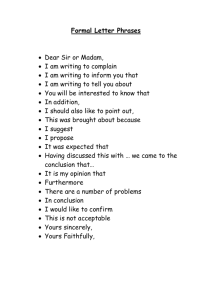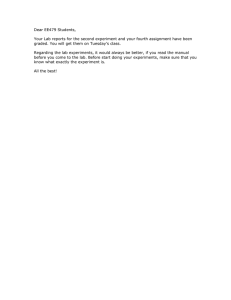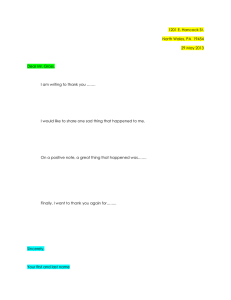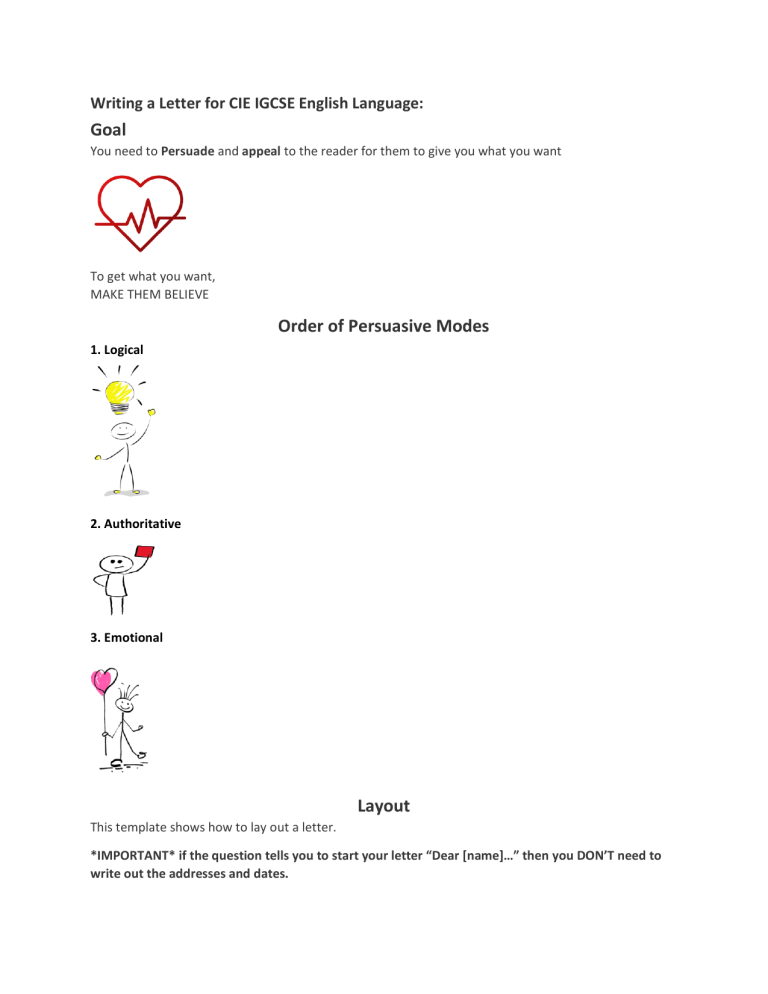
Writing a Letter for CIE IGCSE English Language: Goal You need to Persuade and appeal to the reader for them to give you what you want To get what you want, MAKE THEM BELIEVE Order of Persuasive Modes 1. Logical 2. Authoritative 3. Emotional Layout This template shows how to lay out a letter. *IMPORTANT* if the question tells you to start your letter “Dear [name]…” then you DON’T need to write out the addresses and dates. 1. You should always start your letter with Dear, followed by their name, e.g. “Dear George” or “Dear Mrs Bennett”. If you don’t know their name, you can either write “Dear Sir/Madam” or you can address it to their job title, e.g. “Dear Headmistress”. 2. When you sign off your letter, you can end with “yours sincerely” if you do know their name, and “yours faithfully” when you don’t know their name. One way to remember this rule is: Be FAITHFUL to people you DON’T know Work SINCERELY with people you DO know 3. “ If it’s an informal letter – to a family member or friend – you can sign off with simply “Yours” or Best wishes” or “Love”, if you’re very close. Dos and Don’ts ✓ DO • • Address the recipient by name wherever possible Use different paragraph lengths to keep the layout and rhythm of your letter interesting, Charm your examiner; get them to like you. The best way to do this is with some humour, so add the occasional joke or mild hyperbole for effect. Compliments are also very welcome, something like “p.s. I loved the shoes you were wearing last time we met!” – that added detail will make the examiner smile, which will always work in your favour! ✘ DON’T • • • • Start with “I’m writing because” – teachers and examiners really hate it (it’s a bit lazy, and it’s what lower-grade students do). Instead, open your letter gently: e.g. “It was lovely seeing you last week…” Use colloquial (casual) language or words you’d normally use with friends (like “fleak”) Use short-form, e.g. write out “do not” instead of don’t (to make it more formal) Use a vocabulary you’re not comfortable; being formal doesn’t always mean old fashioned. You can still use contemporary language.
